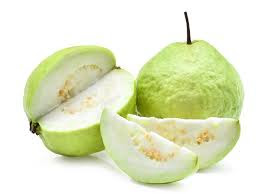Soil sterilization
is the act of killing or destroying the action of diseases causing organism that
are present in the soil without causing harm to other plants. In other words,
soil sterilization is a process by which chemicals are used to render or arrest
soil living organism that are capable of destroying plants and causing disease
in the soil to be inactive, impotent or unproductive. These chemicals are
selective in nature, that is, when they are used, they only affect particular
diseases for which it is meant for, without causing harm to the other organism
that inhabit the soil.
Numerous methods
of soil sterilization have been used to sterilize the soil or inhibit microbial
activities in the soil. The method used often will depend on the facilities
available and the design of the particular experiment. Sterilization usually alters
the chemical and physical properties of soil in addition to eliminating organization.
In soil sterilization, the following methods could are employed;
Steam method: In soil sterilization, steam method
or auto claving are widely used to sterilize soil samples as the equipment is
readily available in most research and teaching laboratories. Soil is steamed
at 1210c for a minimum of 20 to 30mins but generally longer than one
hour. The length of time should be increase when larger amount of soil are
sterilized. The soil can be autoclaved in glass beakers, glass Petri dishes, and
stainless steel trays with lid jar. The container use for this activity can be
covered with aluminum foil. The soil should be spread out in thin layer to
allow for penetration of steam during the auto clave cycle.
Microwaves: This is another method used for the
sterilization of soil. Microwaves cause water in the soil and cells to absorb
heat which result in high temperature that kills the soil organism. For this
reason, the lethal action of micro waves is higher in moist soil than that of dry
soils. Microwaves are rarely used to treat soil in micro biological research.
Y – Irrigation: The main advantage of irrigation is
that, mineral disturbance of soil occurs during the sterilization process. Soil
adjusted to the desired water content for experiment are placed in sealed
polythene soils and irrigation at 2.5 Mrad at the rate of 2 Mrad in one hour. After
irradiation, the soils are maintained under sterile conditions to prevent
subsequent contamination by non-aseptic, tending irradiation can cause
deploymarization of carbohydrates like cellulose and create free hydrogen and hydroxyl
radicals that are reactive as reducing and oxidizing agents and clave c-c
bonds.
Chemical method: Chemical methods of soil
sterilization include the following;
- Sodium oxide (NaN3)
- Gaseous chemicals
- Mercuric chloride (Hgcl2)



No comments:
Post a Comment